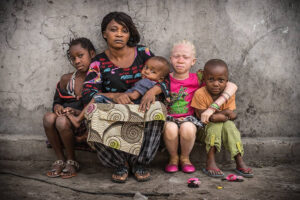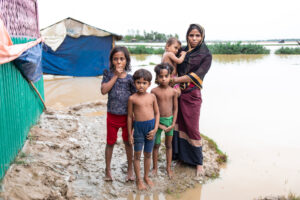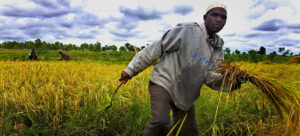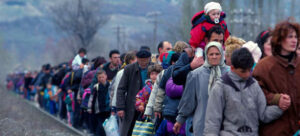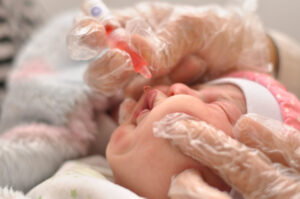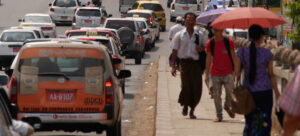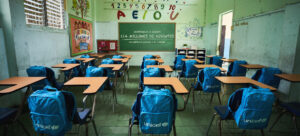Transport is believed to be responsible for around a quarter of all greenhouse gas emissions, and combustion engines are a major cause of poor air quality in urban areas, which is a factor in asthma and other respiratory diseases.
Despite being around for many years, electric vehicles remain a small part of the overall car market. However, with growing concern about climate change, and some eye-catching commitments from governments and car manufacturers, which include plans to ban or end the production of combustion engines within the next few decades, that could be about to change.
Formula E is so far the only sport to be certified net zero carbon since its inception, and those associated with the championship are committed to combatting the climate crisis by accelerating the adoption to electric vehicles.
In July, Conor Lennon from UN News spoke to Julia Pallé, Formula E’s Sustainability Director, and Lucas di Grassi, who won the championship’s first ever race back in 2014, and is a clean air advocate for the UN. They discussed the growth of electric car racing, and why it can help convince the general public to give up combustion engines.

UN/Joon Park
Formula E car at the 2021 New York race in Red Hook, Brookyln.
Julia Pallé: Formula E was built with sustainability in its DNA, and it is part of the reason that teams, drivers, and partners join us. Everyone is involved in pushing electric vehicles to the mass market.
We are using the championship as a platform to advance the electrification of transport by showcasing a range of products and services that are contributing to the creation of a low carbon economy.
Lucas di Grassi: I joined Formula E back in 2012, and I was the third employee. I had already driven an electric car, and I was very interested in the technology.
I think that the public understands that sustainability is not a choice. There are too many people consuming too much, and we need to improve everyone’s quality of life sustainably, without damaging the planet for future generations.
Electric vehicles are a part of that, and Formula E is at the core of the transition, in terms of research and development, and also changing people’s perception of electric vehicles, which has changed massively over the last five years.

UN/Joon Park
Lucas di Grassi, Formula E driver for the Audi team, at the 2021 New York race in Red Hook, Brookyln.
Overcoming a resistance to change
Conor Lennon: Did you encounter any scepticism in the early days of the competition?
Lucas di Grassi: Yes, especially in the motor sport world, where people are very nostalgic. First of all, people laughed about the project, they thought it was a joke. Then they criticised the cars for being slow, for not making any noise, and because we would have to change cars during the races. Then they started to take it seriously, and a few years later they all wanted to join the series!
The famous American physicist Richard Feynman once said that you measure intelligence by people’s ability to adapt or to understand change without getting offended. Formula E is a good example: I grew up loving combustion engine cars, but it is clear that we have to go electric. The motor sports world didn’t agree, but a large proportion of people now understand that electric vehicles can be exciting and fun.
Julia Pallé: There was a lot of scepticism and a reluctance to change. We have seen many victories along the way. From finishing the first season, to more and more partners joining us, and now we are the world championship with the biggest line-up of car manufacturers!
We have also seen many new electric racing series following our example, and this is the biggest testimony that we opened up the way, and showed that electric vehicle races are highly attractive.
Concentrating on the low-hanging fruit
Lucas di Grassi: we have to remember that electric mobility is not just about passenger cars. It ranges from e-bikes, scooters, mopeds, and motorbikes, to cars, vans, trucks, and buses.
However, smaller vehicles are much easier to electrify than trucks travelling long distances, or planes. Large freight ships can’t just go electric, and even if we were to switch to a technology such as hydrogen or nuclear power, the cost of transporting the goods would be much higher.
So we need to concentrate on the low-hanging fruit first, such as e-bikes and cars. That’s why I created the world’s first electric scooter championship. These are not regular scooters, they are very fast, and can reach up to 120 kilometres per hour. Another important development in the growth of sustainable transport is autonomous driving, which is much more efficient, and in 2015 I joined Roborace, the first global championship for autonomously driven, electrically powered vehicles

UNFCCC Secretariat
A team of cyclists on electric bikes ends a 600 km ride at the COP24 Climate Change conference (file)
An electric race against time
Conor Lennon: it seems that you’re taking a twin-track approach with Formula E, testing, and developing a fast-evolving technology, and raising awareness. But there’s a race against time, because the number of people who want to use cars is fast rising, and we have to show that is possible to massively scale up electric transportation to meet that demand.
Julia Pallé: It is clear to all of us, from professionals, to those working with the UN, and the general public, that we have nine years to cut emissions by some 50 per cent in order to reach our climate action goals. To do this we have to change the way we live and, at an individual level, the biggest impact we can have is in the way that we travel.
What we are trying to do is to offer concrete solutions: we are backed by many car manufacturers who are developing technology in Formula E that is used to improve the cars, which ultimately benefits consumers.
We are also a showcase, giving a taste of what a future sustainable lifestyle can look like: offering plant-based food options, banning single-use plastics. So, it’s not about compromising, or giving up things we like, but doing things in a different, enhanced way.
This discussion is adapted from an SDG Media Zone video, part of a series produced for the 2021 High Level Political Forum, the largest annual gathering on progress on the Sustainable Development Goals (SDGs).
